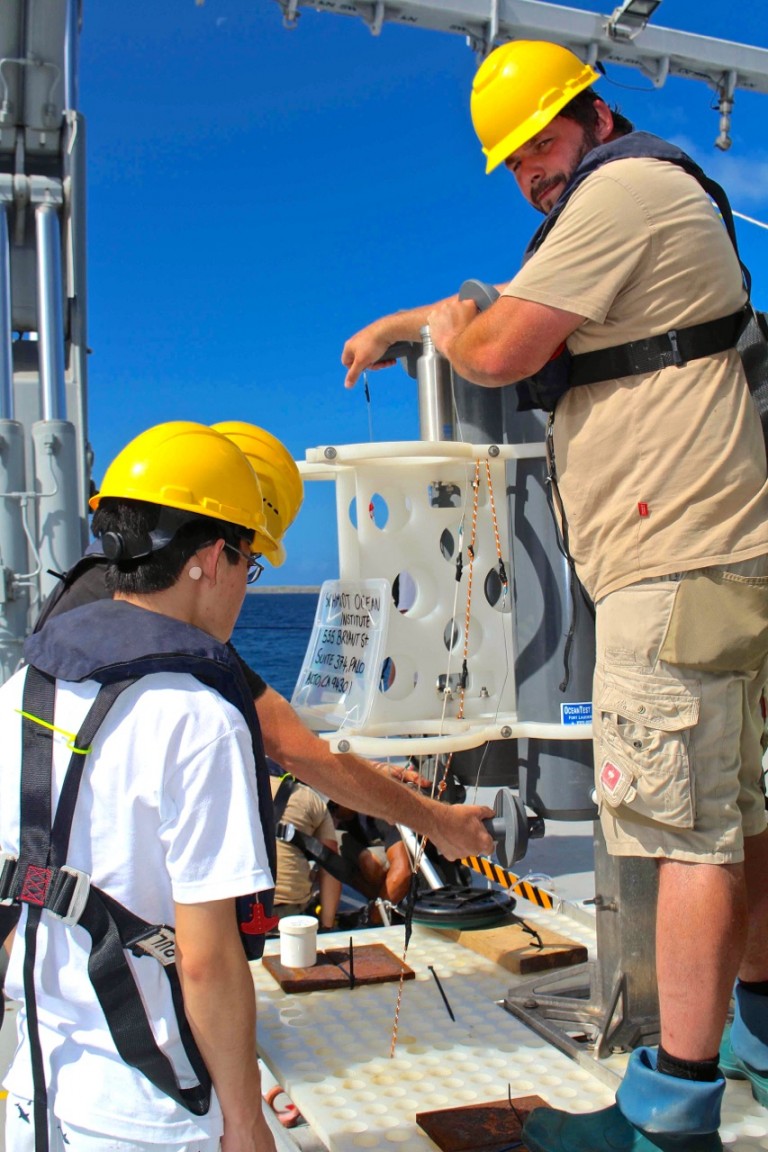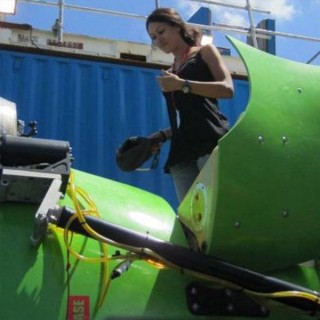I’m glad to report we’ve made it. This morning our team woke up and found ourselves nearly over the heart of Challenger Deep—the deepest ocean trench in the world. Looking out our portholes onto the ocean around us, it was hard to tell that the ocean floor was approximately 10,780 meters below us, the same as about 25 empire state buildings stacked on top of each other.
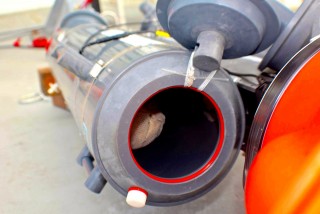
Landers Launch
We were anxious to get started, and at approximately 8:30 a.m. we deployed our first lander. The Leggo Lander as we call it, because it looks like giant white blocks connected together, was equipped with multiple unpressurized water collection tubes, and a single pressurized water collection tube.
A while later our next lander, ARI (named after trailblazing deep-sea microbiologist Art ARIstides Yayanos), went under. This lander was equipped with two large cylinders filled with raw chicken. Chicken, not fish, is the best bait for these deep-sea microbe traps because the microbes already on the chicken are distinguishable from the microbes found in the water column. That means the microbiologist won’t mistake chicken microbes for the real deep-sea microbes, something that could possibly happen if we sent down fish as bait.
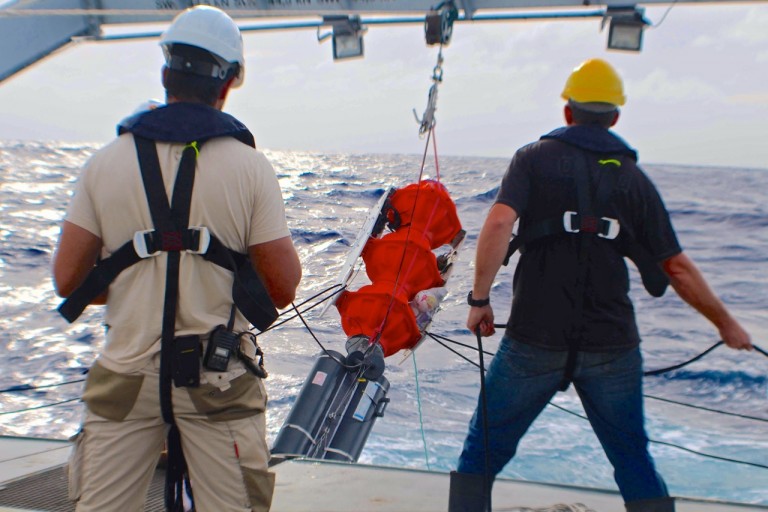
We have high hopes that these two baited traps will return with not just bacteria, but at least a few amphipods or other swimming invertebrates. Also snuggly attached to ARI were ten Styrofoam cups that some of us inscribed with artwork and messages. The incredible pressures experienced during the lander trip will shrink them into handy souvenirs.
Later in the evening, we deployed two smaller landers – DeepSound 2 and DeepSound 3. These were equipped with special acoustic instruments what will hopefully detect sounds, possibly even animal sounds, within the trench.
Coming Up
At about 7:00 p.m. we were delighted to see the flashing light of our first lander, Leggo, bobbing in and out of view on the horizon. Once we got it safely back on the ship, Doug Bartlett’s team went to work immediately on the collected water samples. Dr. Bartlett will analyze these samples for deep-sea microbial diversity and activity.
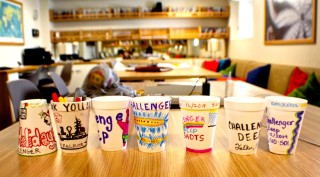
The pressurized collection tube was immediately analyzed by a Scripps Institute of Oceanography graduate student, Logan Peoples. By keeping the collection water pressurized (~ 13,000 to 15, 000 pounds per square inch), Logan will be able to compare his sampled microbes with those collected in the unpressurized tubes to get some idea of which species have to have high pressures to survive.
Tomorrow we will collect the rest of our landers and, hopefully, if the larger swells subside, deploy Schmidt Ocean Institute’s rock-grabber equipped lander—Lollipop is one of its many nicknames—along with Leggo again. This time it will be baited and set up to attract, film, and collect sea cucumbers.
It should be another fun and busy day, so check back in and we’ll let you know what we find.
